The Midwest is home to some of America’s most comforting and hearty food traditions. From cheese-laden casseroles to sweet treats that grace every family gathering, these dishes tell the story of the region’s farming heritage, immigrant influences, and practical, no-waste cooking. While coastal cuisines often get more attention, these Midwestern specialties deserve recognition for their stick-to-your-ribs goodness and the way they bring communities together around the table.
1. Hotdish (Minnesota)

Walk into any Minnesota potluck and you’ll spot at least three variations of this beloved one-dish wonder. The classic combination features ground beef, canned vegetables, creamy soup, and the crowning glory—crispy tater tots—all baked until bubbling and golden.
What makes hotdish special isn’t fancy ingredients but its practicality. Born during the Great Depression, it stretched affordable ingredients to feed hungry families and became the ultimate comfort food during harsh northern winters.
Every Minnesota family guards their hotdish recipe like a state secret. Some add wild rice for a local touch, others swear by cream of mushroom soup, but all agree: it’s not a proper gathering without hotdish on the table.
2. Pork Tenderloin Sandwich (Iowa & Indiana)
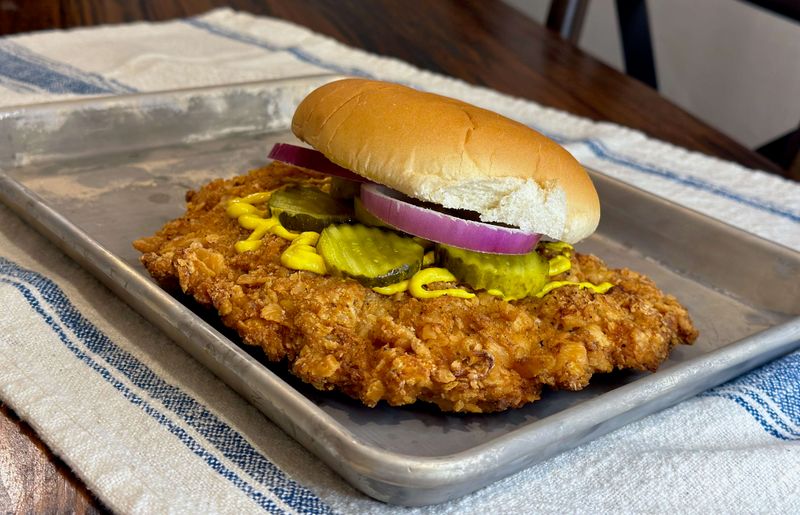
Famously enormous, this Midwestern masterpiece features a pork cutlet pounded paper-thin, breaded, and fried until golden. The meat extends comically beyond the edges of the standard hamburger bun, creating a sight that makes first-timers laugh before taking their first bite.
Gas stations, diners, and family restaurants across Iowa and Indiana compete for bragging rights over who serves the biggest and best version. The traditional toppings remain simple: just pickles, onions, and maybe a smear of yellow mustard.
The sandwich’s origins trace back to German immigrants who brought schnitzel recipes to the heartland. Today, road-trippers plan entire journeys around sampling different versions of this iconic handheld feast.
3. Chicago-Style Deep Dish Pizza (Illinois)
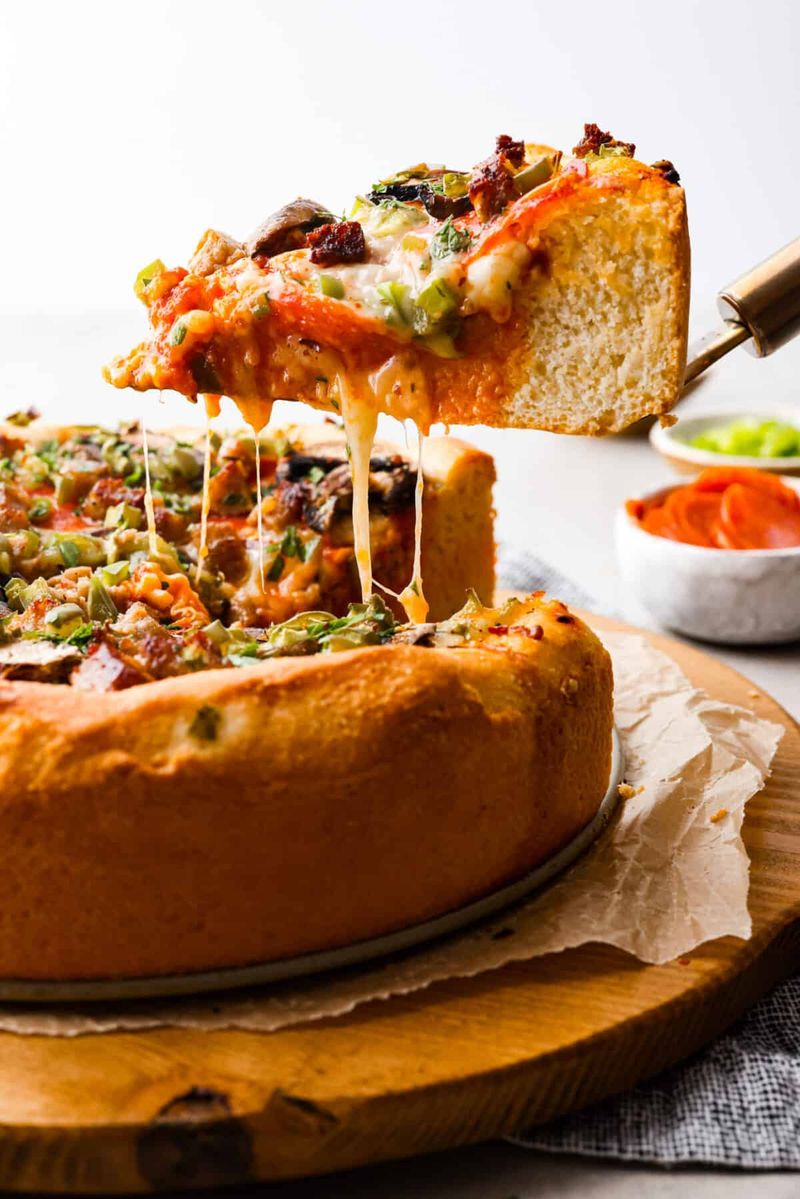
More casserole than traditional pizza, this iconic Chicago creation stands tall with its buttery, cornmeal-enhanced crust forming a deep vessel for layers of gooey cheese, chunky tomato sauce, and hearty toppings. The construction order might surprise newcomers—cheese goes on the bottom to prevent burning during the long bake time!
Each slice requires a knife and fork to tackle its impressive depth. Locals debate passionately about which pizzeria makes the definitive version, with Uno’s, Lou Malnati’s, and Giordano’s often leading the conversation.
Despite what New Yorkers might say, this Midwestern innovation represents Chicago’s immigrant heritage and industrious spirit perfectly. One slice fills you up; two slices means leftovers for tomorrow.
4. Cincinnati Chili (Ohio)
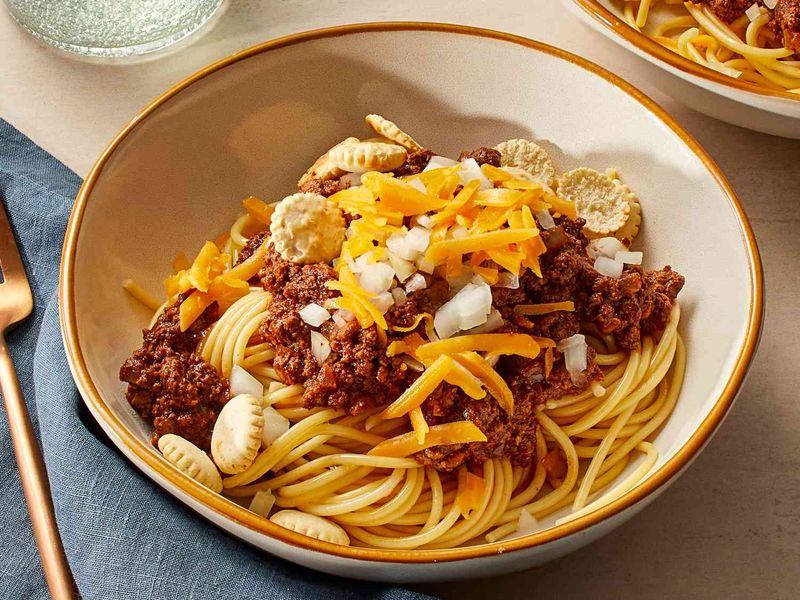
Don’t call it Tex-Mex! This unique Ohio specialty features a silky meat sauce spiced with cinnamon, chocolate, allspice, and cloves—flavors brought by Greek and Macedonian immigrants who made Cincinnati home. The chili isn’t eaten in a bowl but served over spaghetti in a precise numbering system.
Order it “two-way” for just spaghetti and chili, “three-way” adds a mountain of finely shredded cheddar, “four-way” introduces onions or beans, and brave souls go “five-way” with everything piled high. Locals finish the meal with oyster crackers and a side of hot sauce.
Skyline and Gold Star chains battle for regional supremacy, but countless family-owned parlors serve their own versions of this oddly addictive dish that confounds visitors but inspires fierce hometown loyalty.
5. Jucy Lucy (Minnesota)
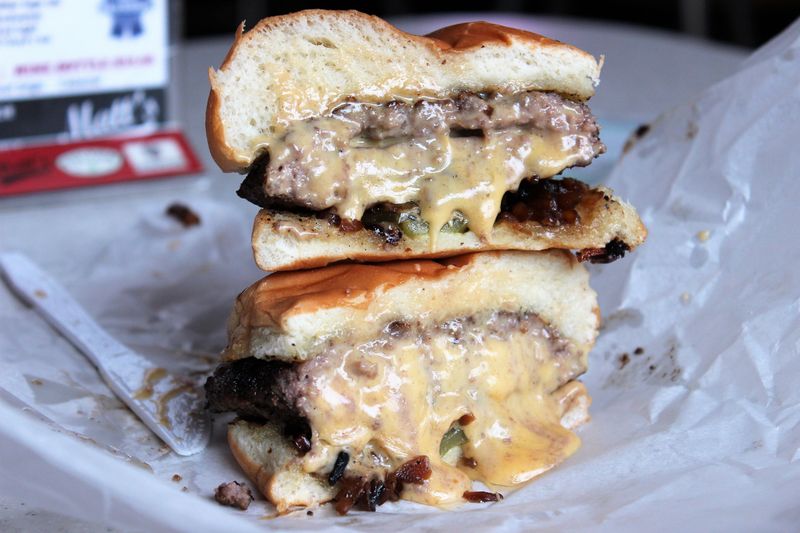
Forget everything you know about cheeseburgers! The Jucy Lucy (intentionally misspelled at Matt’s Bar in Minneapolis) turns tradition inside out by sealing molten cheese inside the beef patty instead of on top. Biting too quickly guarantees a scalding cheese eruption—locals warn first-timers to wait or risk a burned chin.
Two Minneapolis bars claim to have invented this genius creation: Matt’s Bar and the 5-8 Club. Their decades-long rivalry divides neighborhoods and families, with Matt’s spelling it “Jucy” and 5-8 insisting on “Juicy.”
The classic version features American cheese in the center of a thick beef patty on a simple bun with minimal toppings—just grilled onions and pickles. Modern variations stuff everything from blue cheese to jalapeños inside, but purists stick with the original.
6. Casserole Cornbread (Kansas & Missouri)
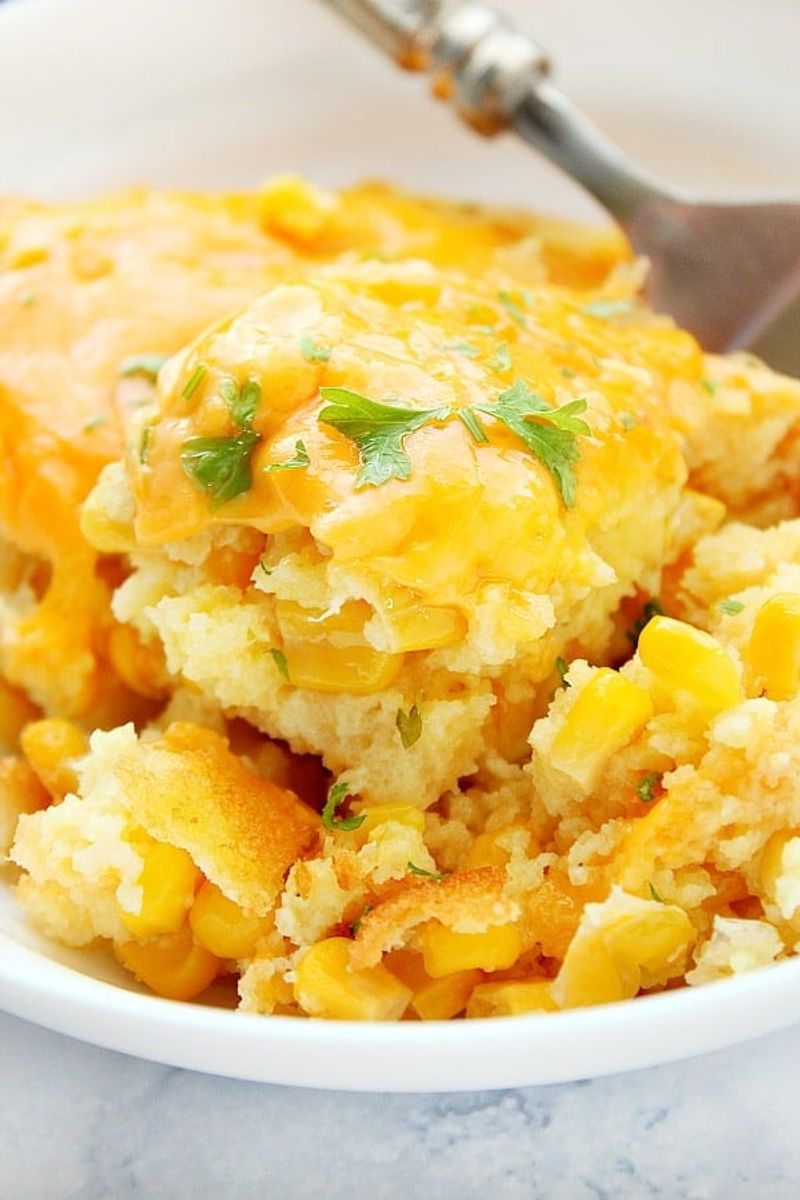
Sweet meets savory in this stick-to-your-ribs side dish that appears at every potluck and holiday table across Kansas and Missouri. Unlike traditional Southern cornbread, this Midwestern interpretation emerges from the oven moist and cake-like, studded with kernels of sweet corn and threaded with melted cheese.
Farm families originally created this hearty dish to use abundant corn harvests. The recipe evolved as convenience foods became popular, with many versions now incorporating cream-style corn, sour cream, and even corn muffin mix for a foolproof result.
Some households add browned breakfast sausage or diced jalapeños for extra flavor, but the classic version stands perfectly on its own. It pairs beautifully with chili, barbecue, or simply a pat of butter while still warm from the oven.
7. German Potato Salad (Wisconsin)
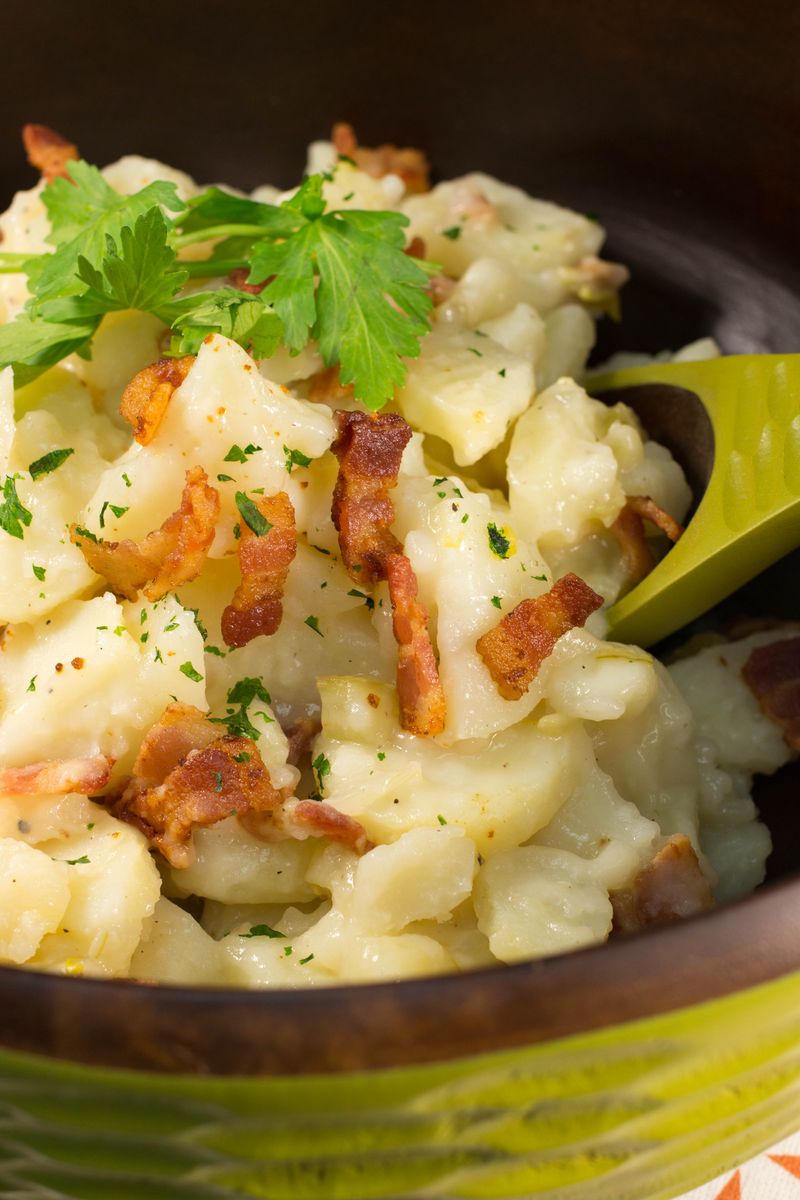
Unlike its mayonnaise-dressed cousin, Wisconsin’s German potato salad arrives at the table warm, tangy, and studded with bacon. Red potatoes hold their shape in a vinegar-based dressing brightened with mustard, sugar, and fresh herbs—a direct culinary inheritance from the German immigrants who settled throughout the state.
Church suppers and Friday fish fries wouldn’t be complete without this side dish. The perfect balance of salty bacon, acidic vinegar, and subtle sweetness creates a flavor profile that complements bratwurst, schnitzel, and other German-inspired main courses.
Family recipes vary dramatically—some add hard-boiled eggs, others insist on a specific type of vinegar. What remains constant is the communal tradition of passing down these recipes through generations, preserving the state’s European heritage through food.
8. Cheesy Hashbrown Casserole (Upper Midwest)
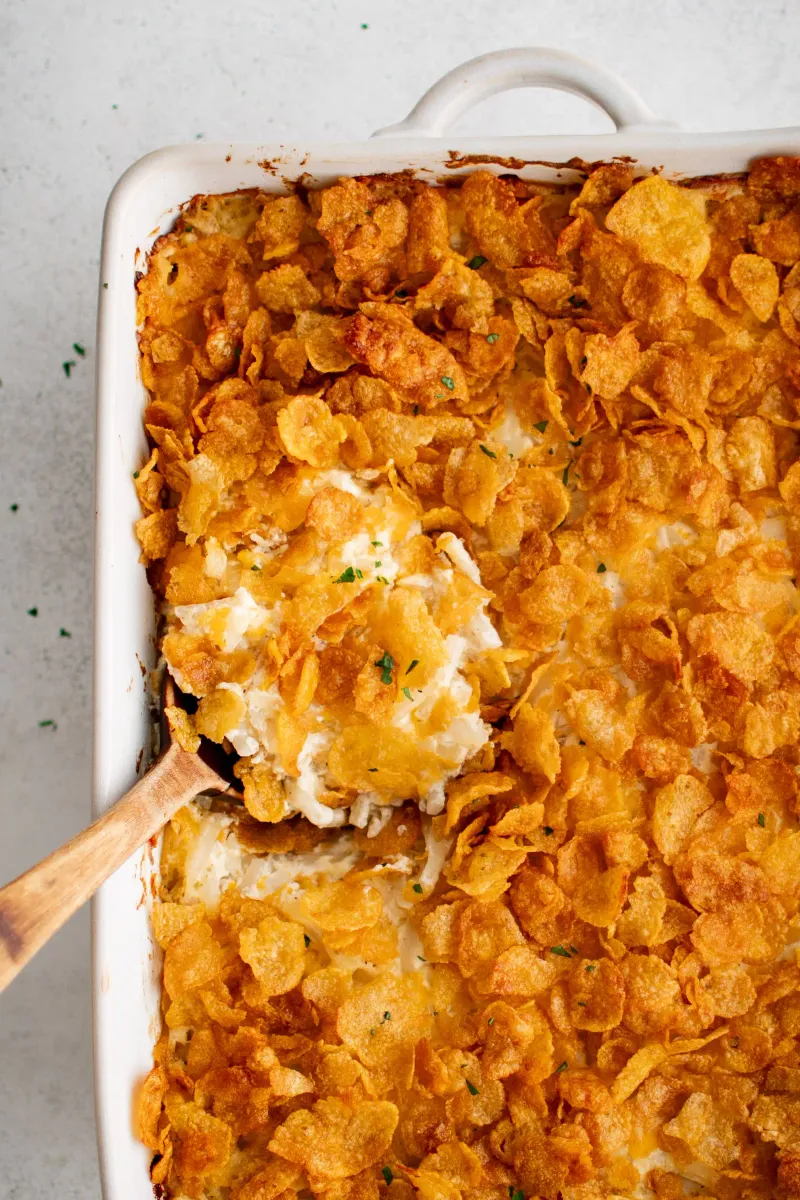
Known affectionately as “funeral potatoes” throughout the Upper Midwest, this ultra-comforting casserole earned its nickname by being the perfect dish to bring to grieving families. The combination of frozen shredded potatoes, sour cream, cream of chicken soup, and generous amounts of cheddar cheese creates a dish that’s impossible to resist even in the saddest times.
Church cookbooks feature countless variations, but the signature topping remains constant: buttery cornflakes or crushed potato chips that add crucial crunch to the creamy interior. Some families add diced ham or onions, while others keep it strictly vegetarian.
Beyond funerals, this casserole appears at holiday meals, potlucks, and Sunday dinners. Its make-ahead convenience and crowd-pleasing flavor make it a staple of Midwestern hospitality, ready whenever neighbors need feeding.
9. Fried Cheese Curds (Wisconsin)
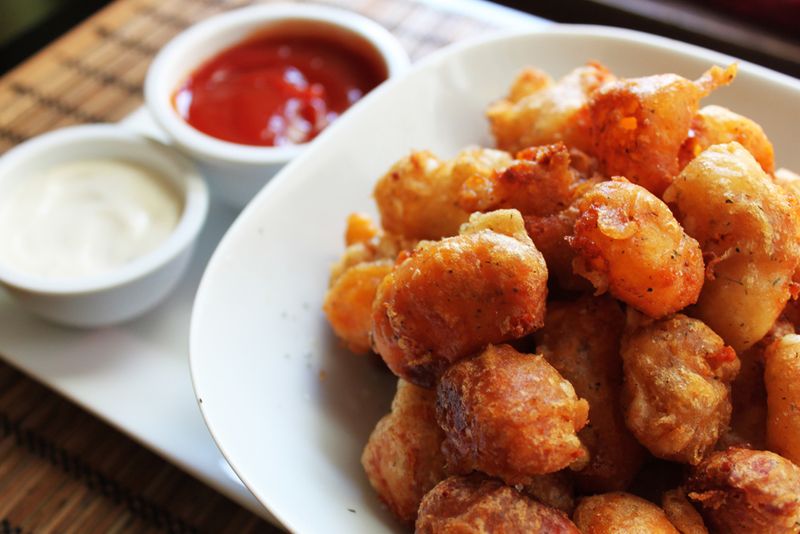
Fresh cheese curds announce their quality with a distinctive squeak against your teeth—a sound Wisconsinites chase daily. But when these fresh cheddar bits take a dip in beer batter and hit hot oil, they transform into something even more magical: fried cheese curds.
The perfect batch arrives golden-brown outside with melty (but not completely liquid) centers. Dipped in ranch or marinara sauce, they disappear from baskets within minutes at supper clubs, bars, and state fairs across Wisconsin.
Dairy plants throughout America’s Dairyland produce fresh curds daily, creating a farm-to-table delicacy that defines Wisconsin snacking. While tourists might try them once for novelty, locals debate the merits of different batters and frying techniques with the seriousness other regions reserve for barbecue or pizza.
10. Slippery Dumplings (Ohio & Indiana Amish Country)
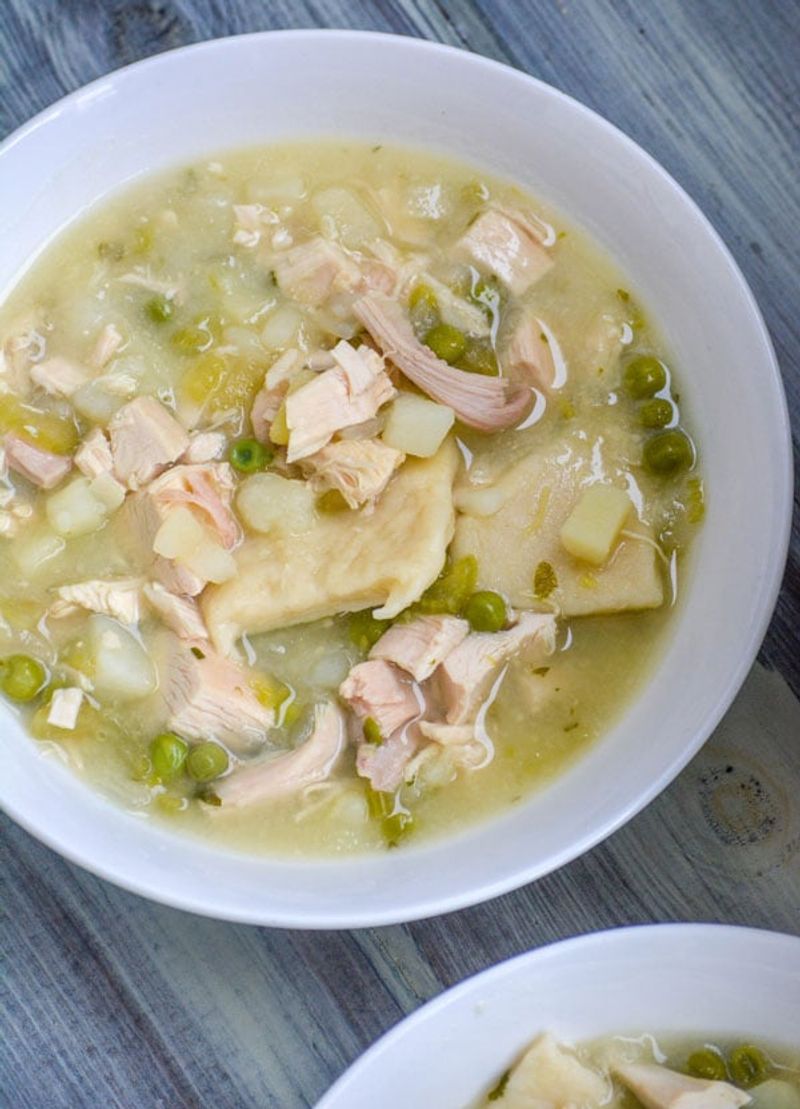
Hand-rolled and cut into diamonds or rectangles, these simple egg dumplings swim in rich chicken broth alongside tender chunks of meat and vegetables. Unlike fluffy drop dumplings, these flat noodle-like creations have a uniquely silky texture that gives them their playful name.
Amish and Mennonite communities throughout Ohio and Indiana have preserved this humble dish for generations. Farm families value its practicality—using minimal ingredients to create a filling meal that stretches a single chicken to feed many hungry workers.
The dumplings absorb the savory broth as they cook, becoming tender but never mushy. Modern kitchens might use shortcuts, but traditional cooks still mix flour, eggs, salt, and just enough water by feel rather than measurement, rolling the dough thin on floured boards just as their grandmothers taught them.
11. Italian Beef Sandwich (Chicago, IL)
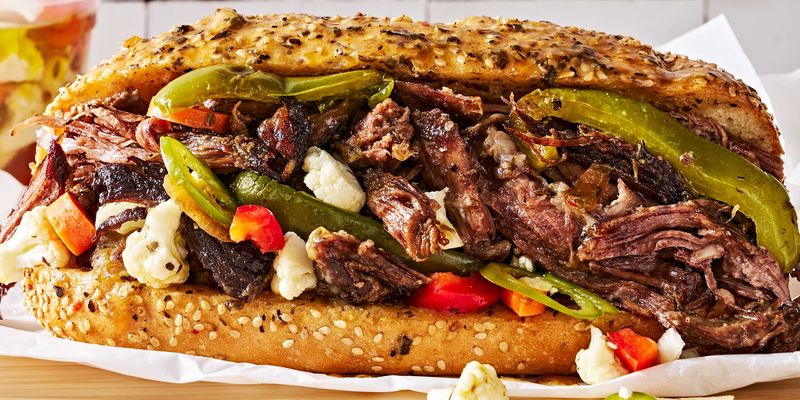
Born in Chicago’s Italian-American communities, this messy masterpiece features thinly sliced roast beef soaked in savory jus, stuffed into a sturdy Italian roll, and topped with spicy giardiniera or sweet peppers. Ordering vocabulary matters: request it “dipped” for a quick bread bath in jus, “wet” for extra juice, or “dry” if you value structural integrity over maximum flavor.
The beef slow-roasts with garlic and herbs until fork-tender, then rests in its own juices, absorbing flavor before being sliced paper-thin. This process creates meat so tender it practically melts on your tongue.
While tourists flock to Al’s Beef or Portillo’s, locals have fierce neighborhood allegiances to family-run beef stands. Proper consumption requires the “Italian stance”—feet spread, elbows out, leaning forward to avoid dripping on your clothes.
12. Coney Dogs (Detroit & Ohio Valley)
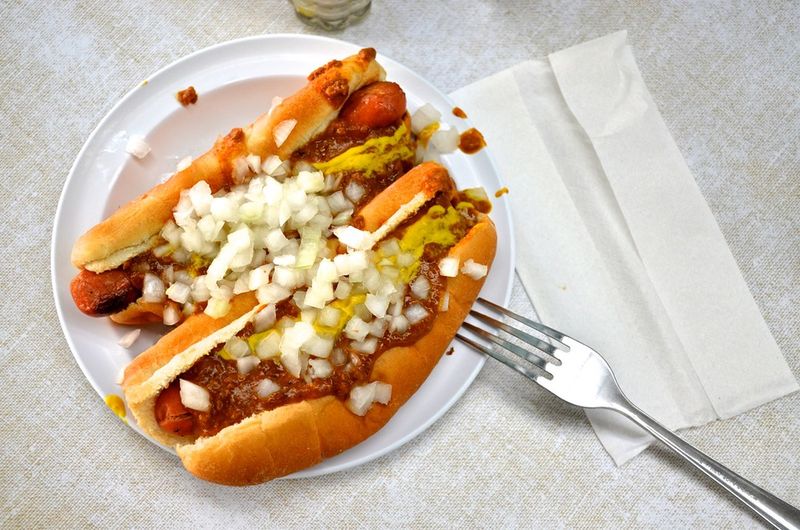
Nothing like the boardwalk treats from Coney Island, these Midwestern hot dogs showcase Greek and Macedonian immigrant influence. A steamed beef frank nestles in a soft bun under a blanket of meaty (never beany) chili sauce, yellow mustard, and diced white onions—the holy trinity of Coney toppings.
Detroit’s American and Lafayette Coney Islands—neighboring rivals since 1917—serve thousands daily in their no-frills diners. In Ohio, skyline and Gold Star chains expanded the Coney tradition throughout the region with slight variations on the sauce recipe.
The chili sauce remains the defining element: finely ground beef seasoned with cumin, paprika, and sometimes cinnamon or allspice. Unlike Texas chili, this sauce has a finer texture specifically designed to cling to hot dogs without overwhelming them or creating structural collapse.
13. Polish Boy Sandwich (Cleveland, OH)
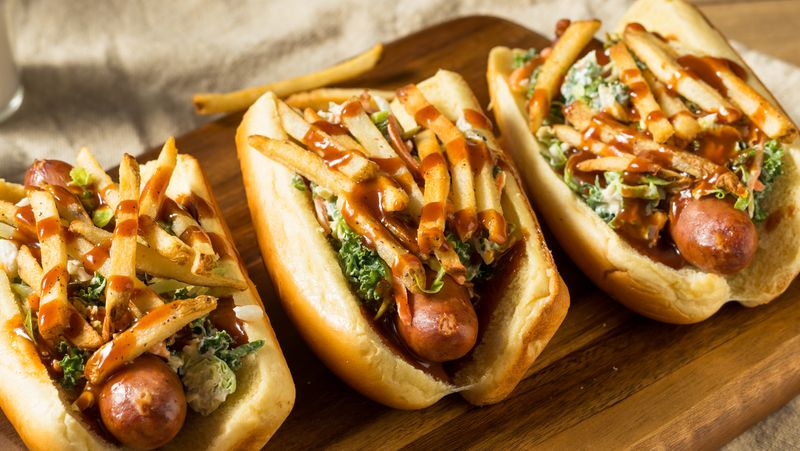
Cleveland’s signature street food packs an entire meal between bun halves. A grilled or fried kielbasa sausage forms the foundation, then gets buried under a mountain of french fries, tangy coleslaw, and barbecue sauce or hot sauce—creating a handheld feast that requires multiple napkins and zero shame.
This working-class creation emerged from Cleveland’s Polish neighborhoods and soul food traditions, representing the city’s multicultural heritage. The best versions come from no-frills takeout windows and food trucks rather than fancy restaurants.
Each component plays a crucial role: the smoky sausage provides savory depth, crispy fries add texture, coleslaw brings cooling crunch, and sauce ties everything together in glorious, messy harmony. Locals debate whether Seti’s Polish Boys or Hot Sauce Williams serves the definitive version, but all agree this sandwich captures Cleveland’s unpretentious food culture perfectly.
14. Runza (Nebraska)
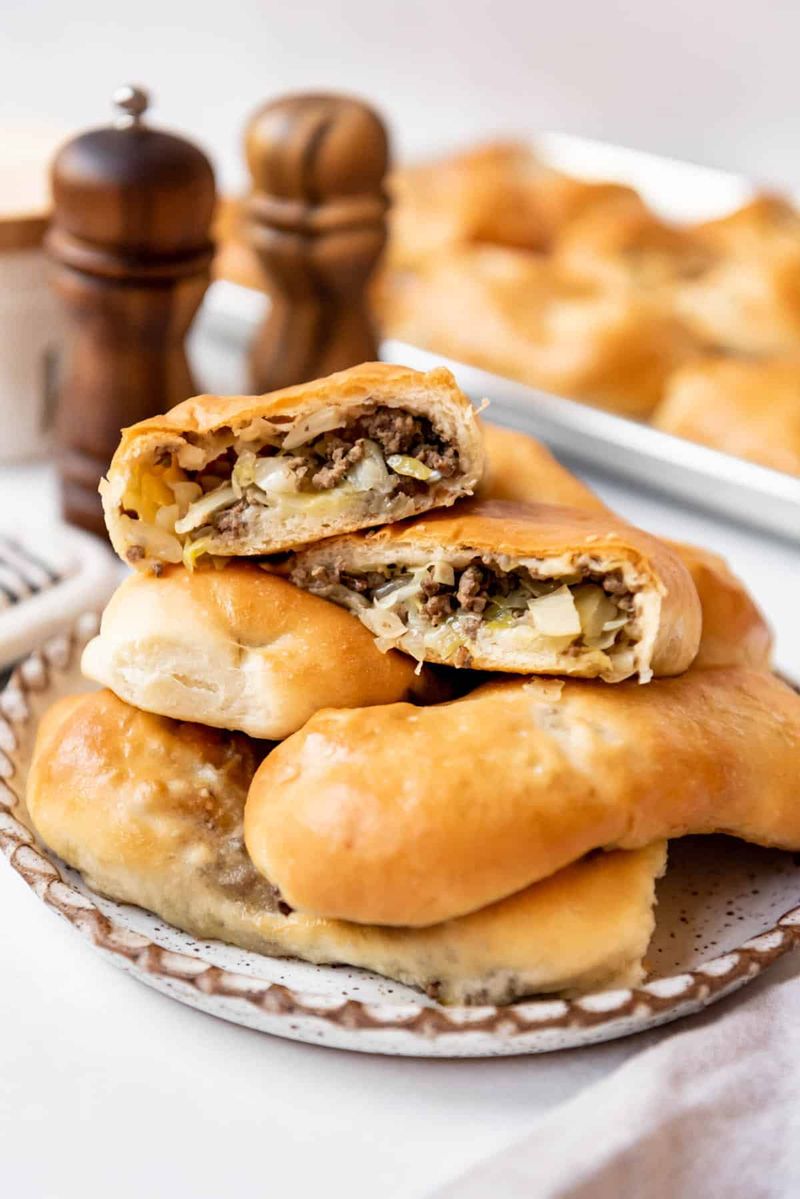
Looking like an oversized dinner roll but hiding a savory filling, the Runza showcases Nebraska’s Russian-German heritage in portable form. These yeast dough pockets encase a simple but satisfying mixture of ground beef, cabbage, and onions seasoned with salt and pepper—comfort food perfected for hardworking farm families.
The name comes from the Russian word “kranz” meaning bundle, though many Nebraskans know them through the regional fast-food chain that trademarked the name. Homemade versions often include additional ingredients like cheese or sauerkraut.
These hearty handheld meals gained popularity for practical reasons: they stay warm for hours, making them perfect for feeding harvest crews working in distant fields. Today, they’re beloved tailgating food at University of Nebraska football games, where fans brave freezing temperatures with hot Runzas keeping their hands warm.
15. Snickers Salad (Iowa & Minnesota)
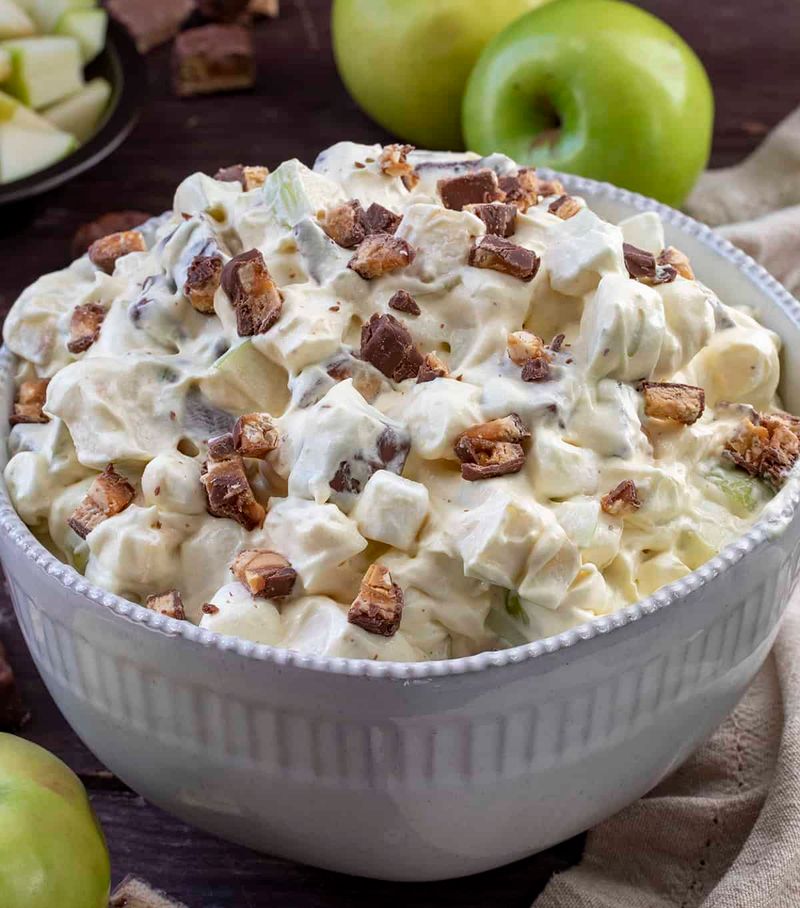
Only in the Midwest would a dish containing chopped candy bars qualify as “salad.” This potluck favorite combines diced Snickers bars, tart apple chunks, and banana slices folded into a sweet mixture of whipped topping and vanilla pudding—creating a dessert that somehow appears on the dinner table alongside actual vegetables.
Church basement gatherings and family reunions wouldn’t be complete without this sugary concoction. The textural contrast between crisp apples, soft bananas, and chewy chocolate-caramel-peanut candy pieces creates an oddly addictive combination.
While coastal visitors might raise eyebrows at its classification as salad, Midwesterners simply smile and take second helpings. Some families add grapes or strawberries for color, but purists maintain that authentic Snickers Salad needs only the core ingredients—and permission to indulge in something thoroughly, unapologetically sweet.
16. Ambrosia Salad (Across the Midwest)
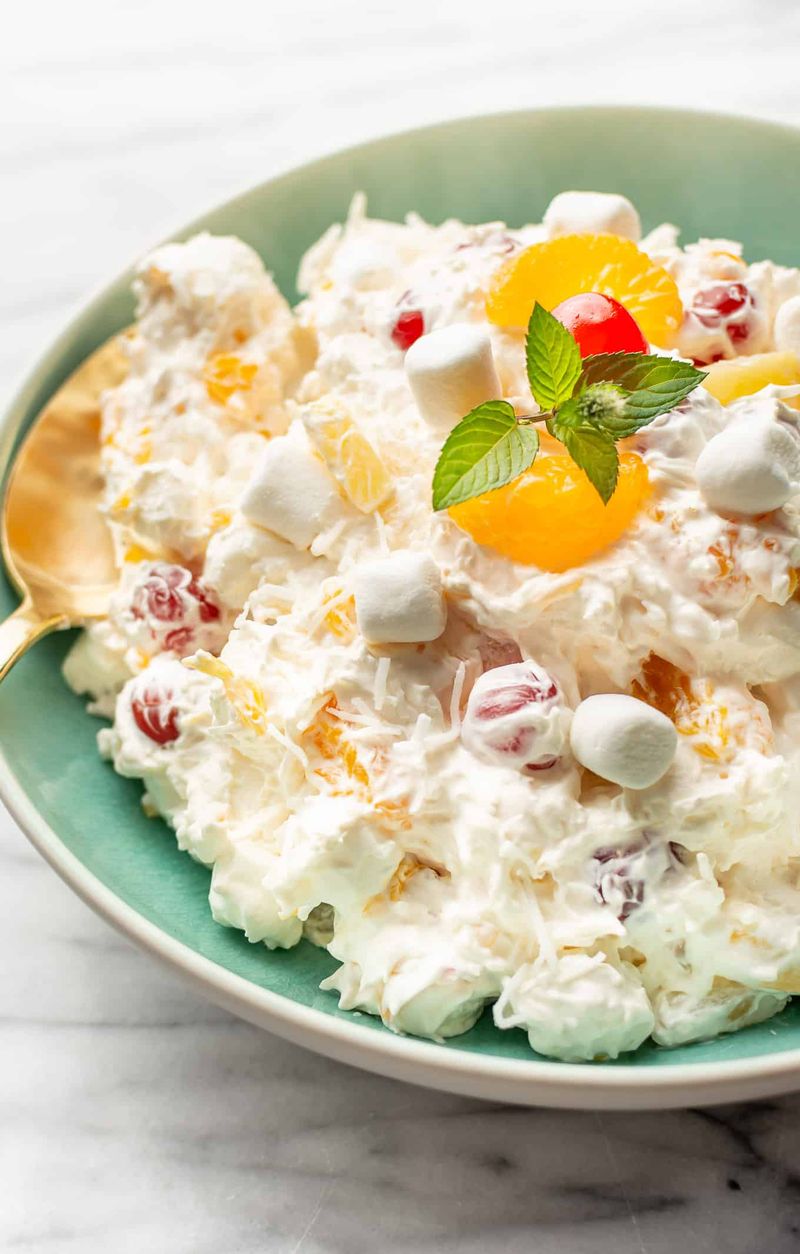
Named after the food of Greek gods, this cloud-like creation appears at virtually every Midwestern holiday table. The classic combination of mandarin oranges, pineapple chunks, maraschino cherries, coconut flakes, and miniature marshmallows suspended in whipped topping creates a technicolor side dish that children adore and adults secretly crave.
Grandmothers throughout the region guard recipe cards with specific instructions about draining fruit (essential) and whether to include nuts (controversial). Some families add bananas or grapes, while others incorporate sour cream or yogurt for tanginess.
This retro favorite gained popularity in the 1950s when convenience foods revolutionized home cooking. Despite changing culinary trends, ambrosia remains a nostalgic constant at Christmas dinners and Easter brunches—a sweet, fruity tradition that bridges generations and exemplifies Midwestern celebration food.
17. Frog Eye Salad (Utah & Midwest potlucks)
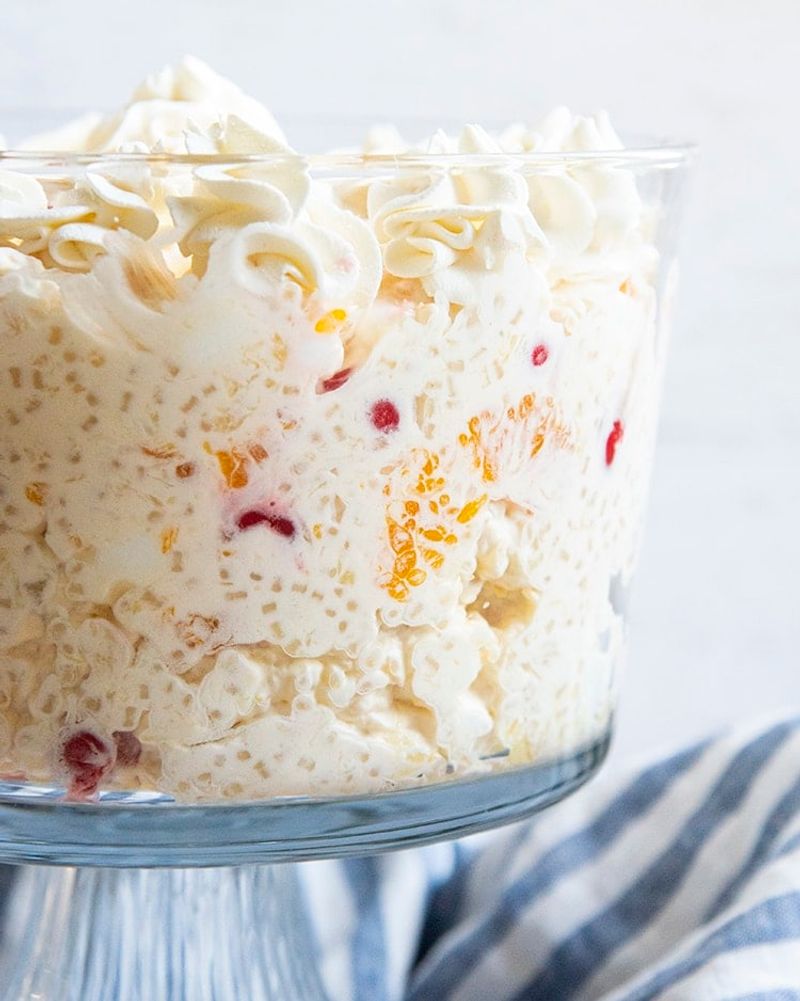
Despite its alarming name, no amphibians contribute to this sweet pasta salad! The tiny acini di pepe pasta pieces resemble frog eyes when cooked, floating among pineapple chunks, mandarin oranges, and marshmallows in a sweet, creamy dressing.
Originally popularized by Mormon communities in Utah, this unusual dish migrated eastward to become a staple at Midwestern church gatherings and family reunions. The make-ahead convenience and large yield make it perfect for feeding crowds.
The preparation involves cooking the pasta in fruit juice for extra sweetness, then folding it with whipped topping, fruit, and sometimes coconut. Each family adapts the recipe slightly—adding maraschino cherries for color or adjusting the sweetness level—but all versions blur the line between side dish and dessert in true Midwestern fashion.
18. Gooey Butter Cake (St. Louis, MO)
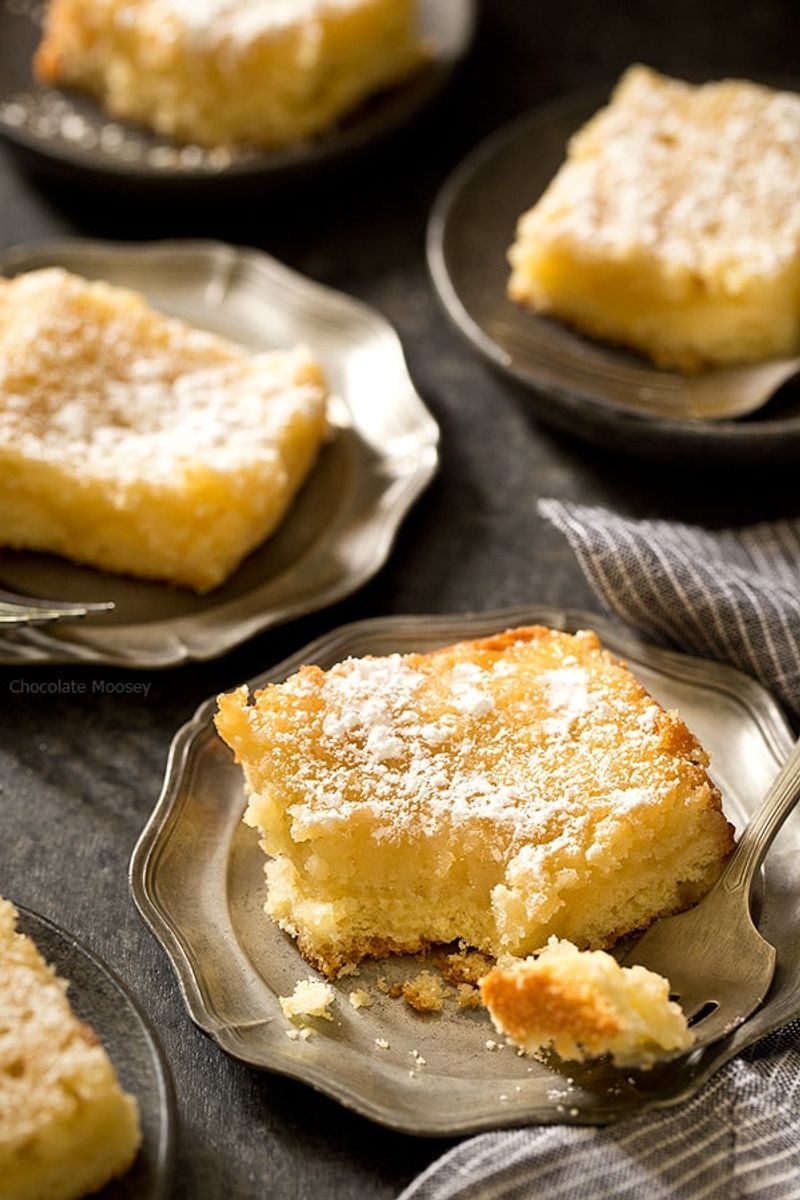
St. Louis bakers created this happy accident in the 1930s when someone mixed cake ingredients in wrong proportions. The result? A flat, dense cake with a crackling top and custard-like middle that’s so rich it makes your teeth ache—in the best possible way.
Traditional versions start with a yeast-raised base topped with a mixture of butter, sugar, and eggs that forms a gooey layer as it bakes. Modern shortcuts often use cake mix and cream cheese for similar results.
While now available in countless flavors from pumpkin to chocolate, purists insist on the original vanilla version dusted generously with powdered sugar. St. Louis natives who move away report craving this hometown treat more than any other food, explaining to confused out-of-towners that the name perfectly describes both the texture and main ingredient.
19. Kringle (Wisconsin – especially Racine)
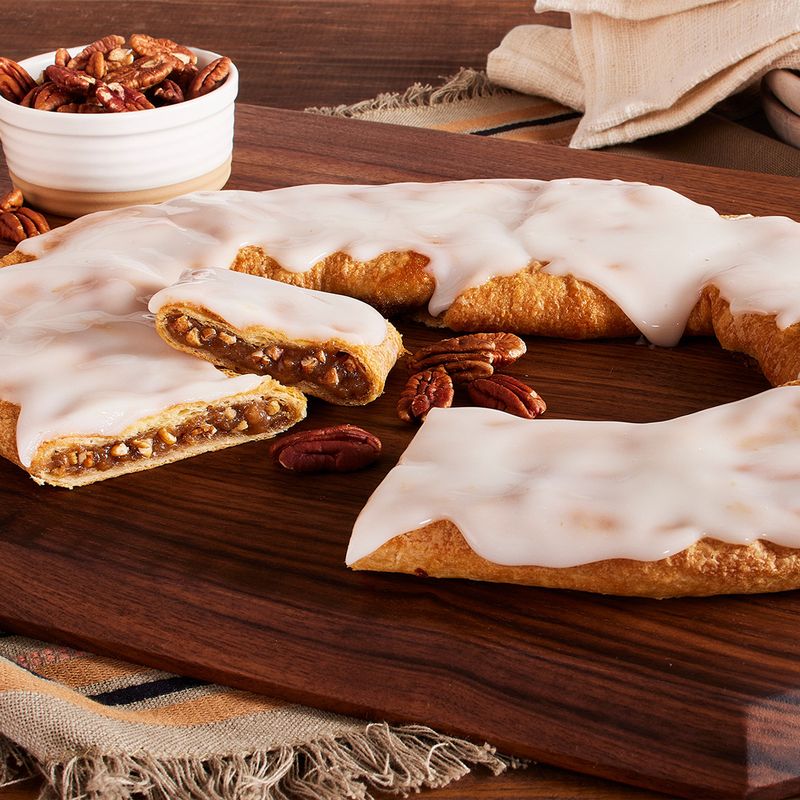
Racine, Wisconsin proudly calls itself America’s Kringle Capital, producing thousands of these oval-shaped Danish pastries daily. The labor-intensive process creates 36 delicate layers of butter-laminated dough that bake into a flaky, tender pastry filled with fruit, nuts, or custard.
Danish immigrants brought their baking traditions to Wisconsin in the 1800s, establishing bakeries that still operate today. O&H, Bendtsen’s, and Larsen’s maintain friendly competition, each guarding secret techniques while collectively elevating this pastry to official state status in 2013.
While available year-round, certain seasonal flavors mark Wisconsin holidays—almond for everyday, pecan for Christmas, and cherry during summer harvest. Locals enjoy kringle with morning coffee, afternoon tea, or as a special breakfast treat, often giving them as gifts to welcome new neighbors or console grieving families.
20. Dutch Letters (Pella, Iowa)
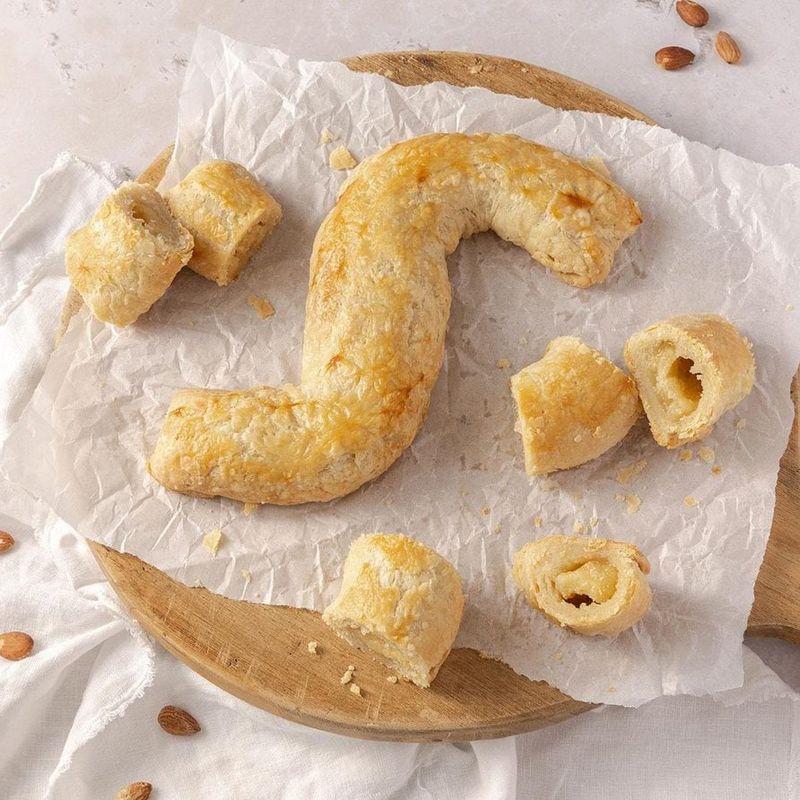
These S-shaped pastries (sometimes called “almond patties”) celebrate the Dutch heritage of Pella, Iowa, where Holland immigrants settled in 1847. Flaky puff pastry wraps around rich almond paste filling, creating a perfect balance of buttery crispness and sweet, nutty interior.
The distinctive S-shape traditionally honors Sinterklaas (Dutch Santa Claus), though many bakeries now offer them in various letter shapes. Dusted with crystal sugar before baking, they emerge from the oven golden and glistening.
Pella’s annual Tulip Festival in May features long lines at Jaarsma and Vander Ploeg bakeries as visitors seek these authentic treats. Local families pass down closely guarded recipes through generations, debating proper texture and almond-to-pastry ratios. While available year-round, many Iowans associate them with Christmas celebrations and special occasions.
21. Buckeyes (Ohio)
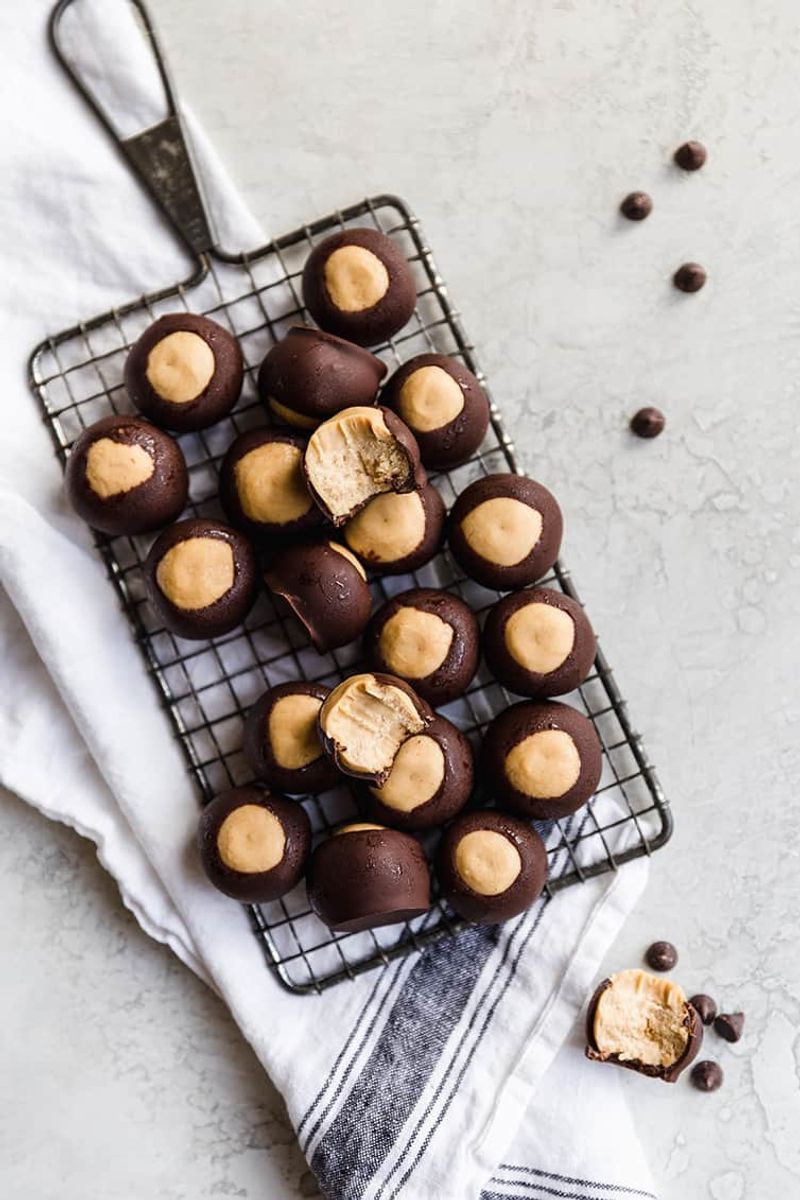
Named for their uncanny resemblance to the nuts of Ohio’s state tree, these no-bake treats feature creamy peanut butter fudge partially dipped in chocolate. The exposed peanut butter top creates the distinctive appearance of a buckeye nut—a source of state pride and tailgate tradition.
Ohio State University football fans make these by the thousands during game seasons. The ritual of rolling peanut butter mixture into balls, chilling them firm, then carefully dipping each one (leaving that characteristic “eye” exposed) brings families together before big games.
While similar to peanut butter cups, buckeyes boast a softer, fudgier texture and higher peanut butter-to-chocolate ratio. Every Ohio family claims their recipe is definitive, with debates centering around proper sweetness, inclusion of paraffin for chocolate shine, and exactly how much of the peanut butter should remain visible.
22. Rhubarb Pie (Minnesota & the Dakotas)
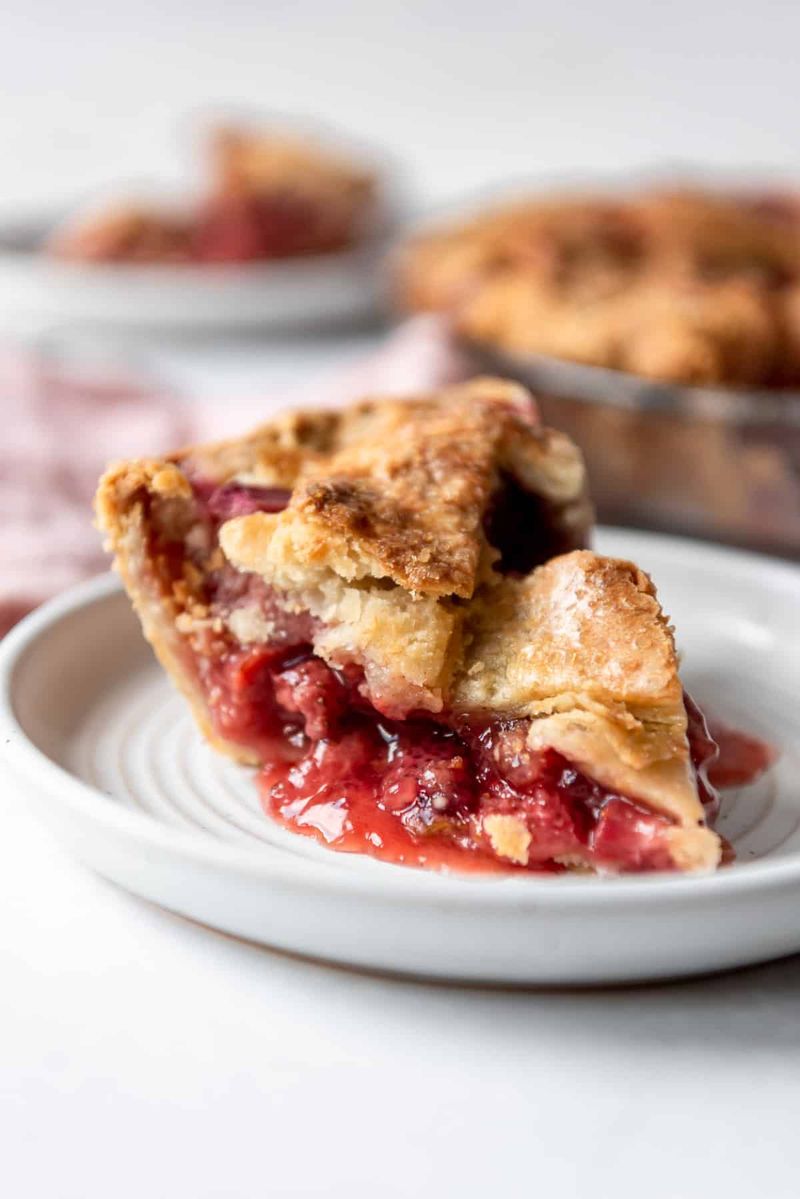
Spring hasn’t truly arrived in the Upper Midwest until ruby-red rhubarb stalks emerge in backyard gardens. This tart vegetable (yes, vegetable!) transforms into the region’s signature pie—a perfect balance of mouth-puckering acidity and sweet, buttery crust.
Prairie settlers valued rhubarb for its reliability and early harvest when other fruits weren’t yet available. Farm wives developed recipes that celebrated its unique flavor, sometimes pairing it with strawberries but often letting the rhubarb shine solo with just enough sugar to tame its natural tartness.
County fairs across Minnesota and the Dakotas feature fierce rhubarb pie competitions where judges evaluate the perfect balance of sweet and sour, ideal consistency (not too runny), and flaky crust. Many winning recipes remain closely guarded family secrets, passed down through generations on stained recipe cards.
23. Brandy Old Fashioned – Sweet (Wisconsin)
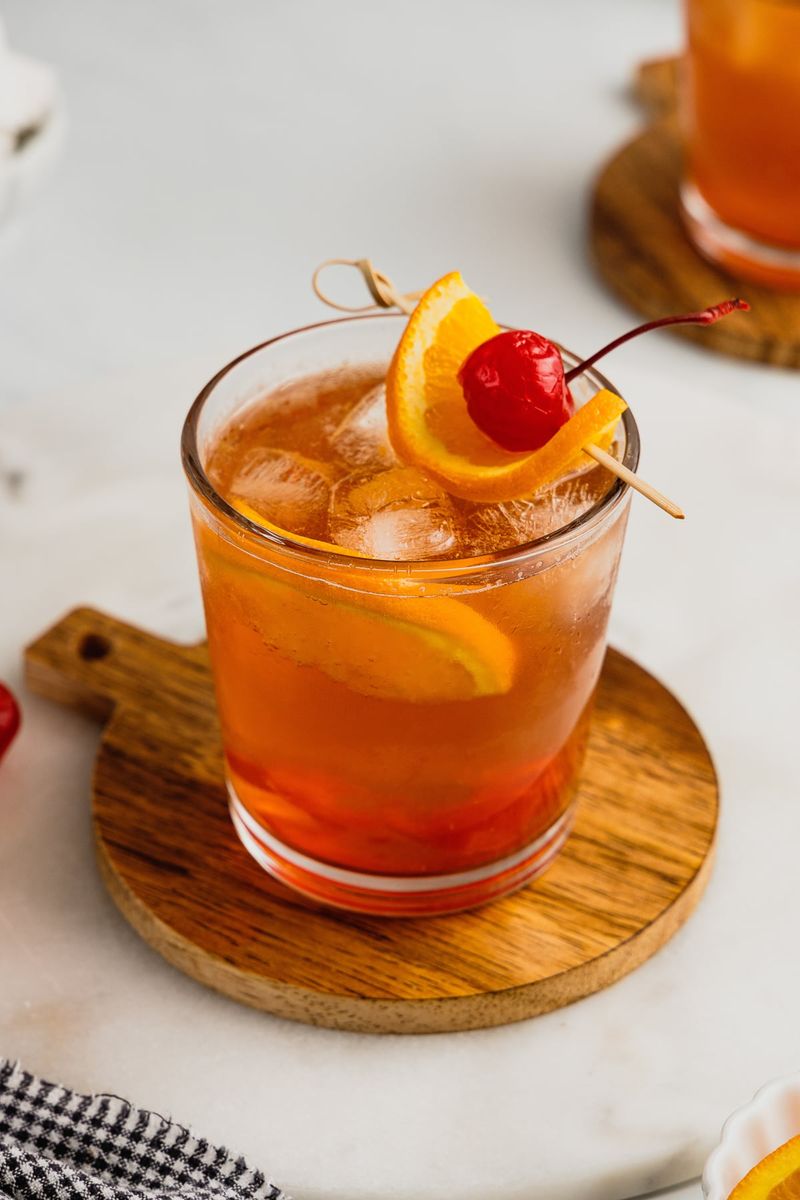
Wisconsin’s unofficial state cocktail bears little resemblance to the whiskey-based classic served elsewhere. This distinctly Midwestern interpretation starts with brandy (never whiskey), muddled with sugar, bitters, and fruit, then topped with lemon-lime soda for a sweet, fruity concoction that horrifies cocktail purists but delights locals.
Supper clubs throughout the state serve these by the thousands every Friday night. Bartenders muddle orange slices and maraschino cherries with sugar cubes in the bottom of rocks glasses, add ice and brandy (preferably Korbel), then finish with Sprite or 7UP for the sweet version or soda water for “sour.”
Wisconsin’s love affair with brandy reportedly began at the 1893 Chicago World’s Fair when Korbel representatives offered samples. Today, the state consumes more brandy per capita than anywhere else in the nation, primarily in this beloved cocktail.
24. Blue Moon Ice Cream (Michigan & Wisconsin)
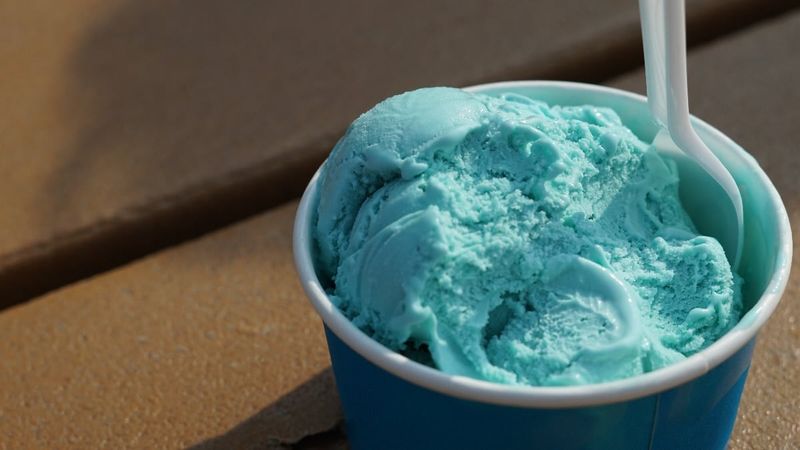
Brilliant blue and mysteriously flavored, this Midwest-exclusive ice cream has sparked debates for generations. The electric blue color catches children’s eyes, but the flavor defies simple description—some detect hints of almond, vanilla, and citrus, while others insist it tastes like the milk left after eating Froot Loops cereal.
Small dairies throughout Michigan and Wisconsin guard their recipes closely. Despite widespread rumors, the flavor isn’t actually bubblegum, though many kids swear otherwise after their first lick.
Summer vacations to lakeside towns wouldn’t be complete without a scoop of Blue Moon in a waffle cone. Local ice cream parlors report it’s often their bestseller, especially among nostalgic adults introducing their children to this regional treat. When Midwesterners move away, they often list Blue Moon ice cream among the foods they miss most.
Leave a comment